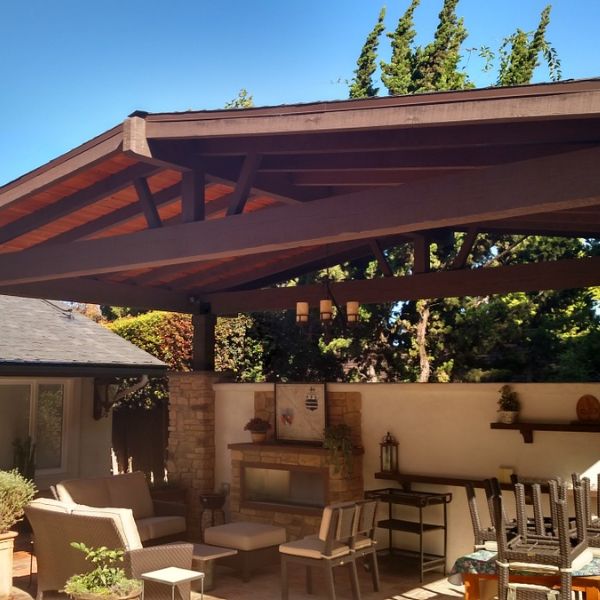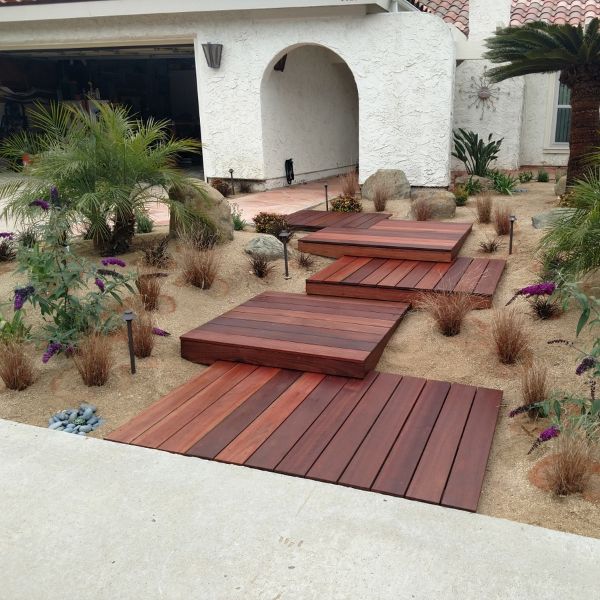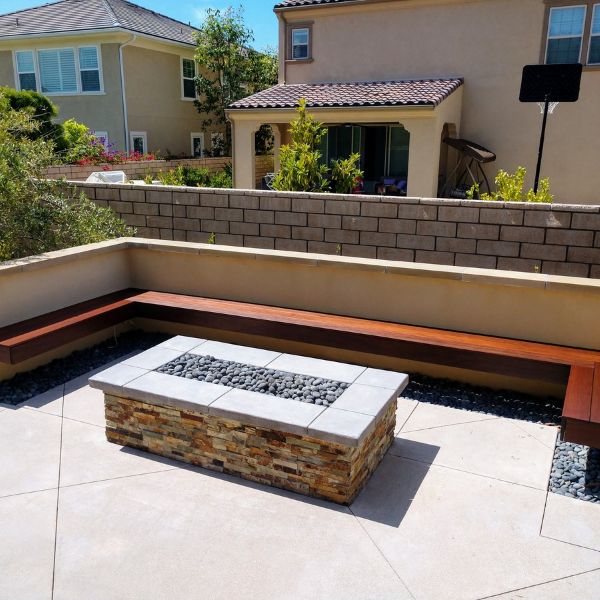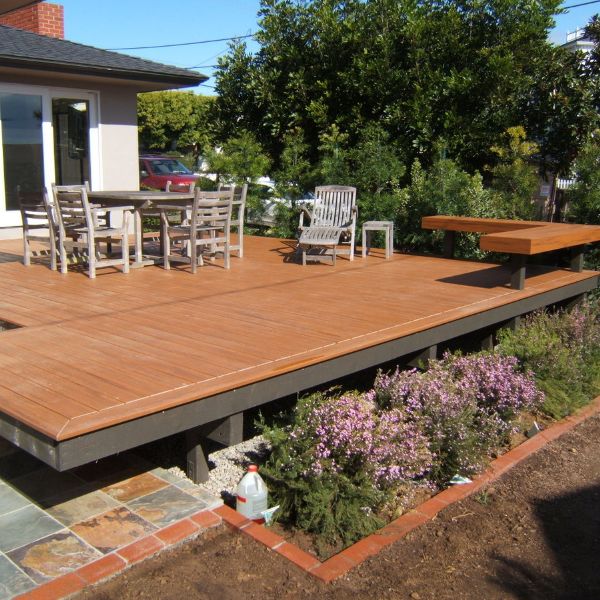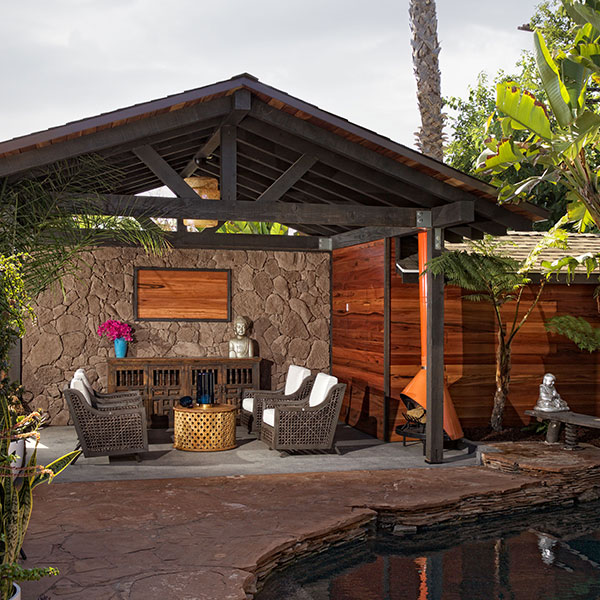Keep Your Landscape Beautiful With Custom Retaining Walls
Are you looking to add stability and functionality to your landscape, while also boosting your property value? Retaining wallsmay be the solution you’re seeking.
At Wilson Woodscape, we know it’s a hassle to keep your landscape intact due to the hills Southern California is known for. Fortunately, our San Diego landscape contractor, Jeff Wilson, can keep your landscape intact by adding beautiful, custom retaining walls to your space. Do you have a landscape project that needs retaining walls? Call us at 619-838-1398!
What Are Retaining Walls?
Retaining wallsare structures designed to serve several purposes, including holding back soil, preventing erosion, and creating functional outdoor living spaces. They’re commonly used in gardens, patios, and other outdoor areas. They come in various forms, with a wide range of materials available to suit different needs and preferences.
Why Choose Wilson Woodscape for Your Retaining Wall Project
With over 40 years in construction and 25 years specializing in landscaping, Jeff Wilson brings a wealth of experience to your project. He uses custom ironwork, woodwork, concrete work, and more to create distinctive and elevated outdoor spaces.
At Wilson Woodscape, we’re not your typical landscape company. We’re innovators, striving to give you a landscape that stands out. Our craftsmanship is exceptional, ensuring your project is nothing short of spectacular. When you choose Wilson Woodscape, you’ll wonder why you didn’t contact us sooner. Your retaining wall project deserves the touch of experience and creativity that only Wilson Woodscape can provide.
Benefits of Retaining Walls
Retaining walls offer numerous benefits that go beyond their primary function of retaining soil. They also provide:
- Sliding prevention
- Soil erosion control
- Flood prevention
- Level surfaces on sloping yards
- More use of outdoor space
- Extra space in outdoor living areas
- Increased curb appeal
- Aesthetic appeal to outdoor spaces
- Customizable materials, colors, and designs
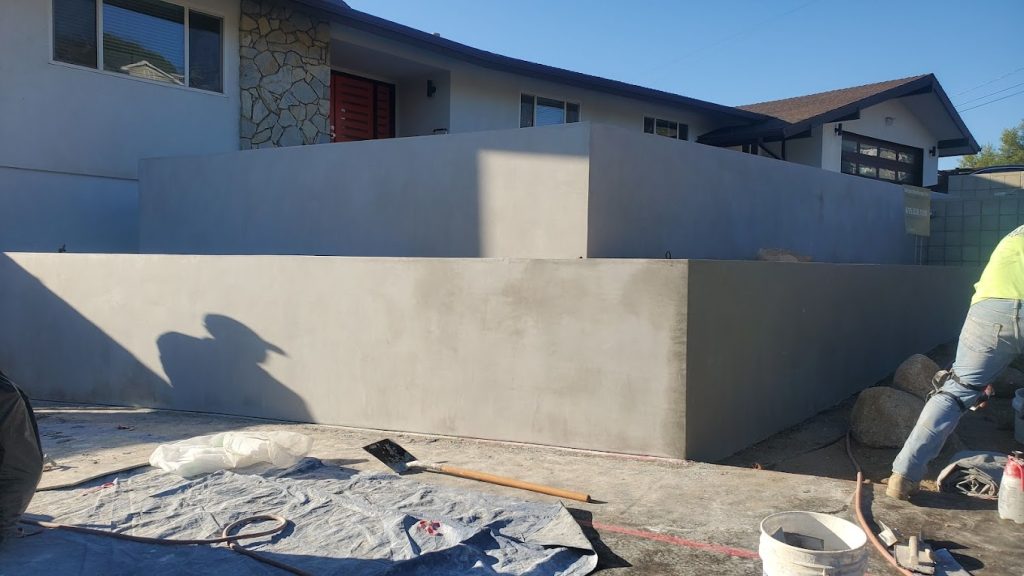
Types of Retaining Walls
Gravity Walls
Gravity retaining wallsrely on their weight and mass to resist lateral pressure exerted by the soil behind them. They’re commonly built with concrete blocks, stone, or masonry, making them suitable for heights up to 10 feet. They can also be the best choice in tight places or for smaller walls.
One popular option for gravity retaining walls is interlocking retaining wall blocks, which provide a versatile and straightforward installation process. These blocks can be used to construct walls with a maximum height of 24 to 36 inches, ensuring stability and durability for your landscape.
Cantilever Walls
Cantilevered retaining wallsare L-shaped or upside-down T-shaped structures made of reinforced concrete, providing stability without additional anchoring. They can reach up to 33 feet in height, making them versatile for different landscape projects. They’re commonly built with materials like precast concrete, prestressed concrete, or reinforced concrete to ensure durability and stability.
Their simple design and lack of external support make cantilevered retaining walls a cost-effective choice. They’re easy to construct and maintain, ensuring long-lasting performance. These walls evenly distribute weight across the structure due to their wide base and offset vertical wall, and are suitable for retaining walls up to 10 feet in height.
Anchored Walls
Anchored retaining wallsare designed for areas with limited space that require thin walls, which is particularly useful for retaining loose soil over rocks. These walls use cables or rods driven horizontally into the earth to offer extra support, and their ends are filled with poured concrete to ensure secure anchoring. This innovative use of anchors, or tiebacks, allows for walls of considerable height to be built while counteracting sliding pressure and overturning.
The stability and durability of anchored retaining walls hinge on precise construction and meticulous installation. They’re particularly favored in areas with heavy soil loads or where the need for high retaining walls arises, as they utilize cables or rods anchored into the soil behind the wall to provide additional support.
Gabion Walls
Gabion retaining wallsconsist of wire mesh boxes filled with rocks or other materials and are commonly used for slope stabilization. These walls can be customized to suit the specific needs of your landscape, making them a versatile and practical option. Constructing gabion walls involves creating rectangular wire mesh boxes and filling them with rock or other materials, providing a unique and attractive solution for retaining soil.
The use of gabion walls in your landscape project can enhance the visual appeal of your outdoor space while providing effective slope stabilization. This type of retaining wall is especially suitable for areas with steep slopes or unstable soils, ensuring both functionality and aesthetic value.
Counterfort Walls
Counterfort retaining wallsemploy diagonal supports, offering enhanced resistance against gravity for taller structures. These walls incorporate thin vertical concrete webs, known as counterforts, strategically positioned along the backside to provide additional support and resist lateral thrust. Behind the wall, counterfort walls offer increased structural strength due to their diagonal supports, making them suitable for taller walls.
With their supplementary reinforcement, counterfort walls can achieve greater heights without compromising stability, making them an excellent choice for landscapes necessitating robust soil retention and erosion prevention. These walls share similarities with cantilever walls but distinguish themselves with the inclusion of vertical concrete or masonry columns for added support, rendering them suitable for retaining walls exceeding 10 feet in height.
Factors to Consider When Choosing a Retaining Wall
Choosing the right retaining wall for your landscape requires consideration of several factors. Here are some factors to consider:
- Purpose: Determine the purpose of the retaining wall, whether it’s to retain soil, prevent erosion, or create a raised garden bed.
- Height: Consider the required height of the retaining wall, as different types of walls are suitable for varying heights.
- Soil type: Take into account the soil type, as certain soil types are more conducive to specific retaining wall designs.
- Drainage requirements: Proper drainage is vital for maintaining the structural integrity of the wall.
- Budget: Establish a budget for the retaining wall project, as costs can vary depending on the materials used and the complexity of the project.
- Location: Consider the location of the retaining wall in terms of residential, commercial, or industrial applications, as different types of walls are more suited to certain environments.
- Aesthetics: Consider if you want the retaining wall to have a certain appearance that fits your landscape appeal.
Retaining Wall Materials
When considering materials for retaining walls, it’s important to weigh their characteristics and suitability for your specific landscaping needs. Materials include:
- Concrete Retaining Walls: Concrete retaining walls are versatile and durable, making them a popular choice for landscaping projects. They can be in the form of poured concrete, blocks, or precast panels.
- Wood Retaining Walls: Wood retaining walls are an affordable and renewable option, adding natural beauty to your landscape. However, they require regular maintenance to prevent rot and decay and are typically limited to four feet in height.
- Stone Retaining Walls: Stone retaining walls provide an eco-friendly and visually appealing option. They can be constructed with natural or manufactured stones, offering diverse design possibilities. Proper drainage is crucial to prevent water damage and structural issues.
- Brick Retaining Walls: Brick retaining walls offer strength, durability, and classic charm, suitable for both traditional and contemporary designs. Like stone walls, they require proper drainage systems to maintain integrity and prevent water damage. They can be built using block retaining methods for a strong and visually pleasing solution.
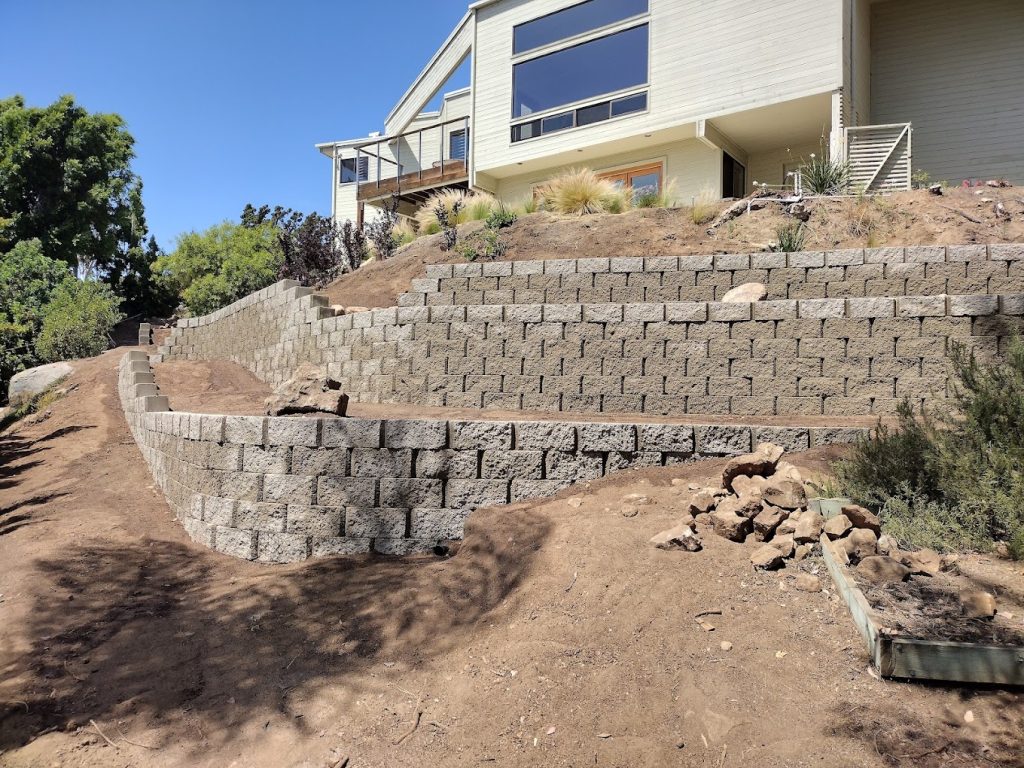
Constructing Retaining Walls
Several steps need to be taken into account when constructing a retaining wall. Those steps include:
- Site Preparation: This encompasses reviewing local building codes, evaluating slope and grade, analyzing soil conditions, recognizing any site constraints, and acquiring necessary permits.
- Proper Drainage: Ensure the retaining wall has adequate drainage to prevent water buildup behind the wall. It can be achieved through the use of weep holes, gravel backfill, or drainage pipes.
- Suitable Materials: Choose materials appropriate for the height and soil load of the retaining wall. This will ensure the wall is structurally sound and can withstand the pressure of the soil behind it.
- Proper Foundation: The foundation of the retaining wall is critical to its stability. The foundation should be level, stable, and extend below the frost line.
- Backfilling: Backfill the retaining wall with suitable materials to ensure stability and proper drainage. This can include gravel, crushed stone, or a mix of gravel and sand.
- Professional Installation: Retaining walls should be installed by professionals with experience in landscape construction. This will ensure the wall is properly constructed and meets all safety and building code requirements.
Retaining Wall Maintenance
Performing maintenance for retaining walls is essential for ensuring they remain functional, safe, and aesthetically pleasing. Tips for maintaining your retaining walls in San Diego include:
- Inspections: Regular inspections can help detect issues early on, such as cracks or bulges in the wall. They can prevent more significant damage from occurring.
- Regular Cleanings: Dirt, debris, and plant growth can accumulate on retaining walls over time, which can impact their appearance and cause damage. Cleaning the wall can help prevent this. Use a pressure washer or stiff brush and mild detergent to clean the wall.
- Repair any damage: If any damage is detected during inspection, repair it promptly. This can prevent further damage and maintain the wall’s stability. Repairs may include filling in cracks, replacing stones or bricks, or reinforcing the wall with additional support.
- Maintain proper drainage: Ensure the retaining wall has adequate drainage to prevent water buildup behind the wall. This can be achieved through the use of weep holes, gravel backfill, or drainage pipes.
- Manage plant growth: Plant growth can impact the stability of retaining walls. Plants with deep root systems shouldn’t be planted too close to the wall. Regularly prune and remove any plant growth that’s too close to the wall.
- Monitor soil settlement: Settlement of the soil behind the wall can cause the wall to shift or bulge. Regularly monitor the soil behind the wall for signs of settlement, and make adjustments as needed.
- Seek professional assistance: If there are significant issues with the retaining wall, it may be necessary to seek professional assistance. This can include a structural engineer or a professional landscaper with experience in retaining wall construction and maintenance.
Frequently Asked Questions
The need for permits depends on local regulations and building codes. In general, if a retaining wall is higher than four feet, a permit is typically required. Homeowners should check with their local building department to determine if permits are necessary for their retaining wall project.
The height of a retaining wall depends on various factors, including the soil type, the slope of the ground, and the weight of the soil behind the wall. In general, retaining walls higher than three to four feet should be designed and constructed by a professional engineer to ensure proper stability and safety.
Yes, retaining walls can be used for water management by redirecting the flow of water away from the foundation of a home or building. Retaining walls can also be designed to incorporate drainage systems to prevent water buildup behind the wall.
Yes, retaining walls can be designed to incorporate seating areas, such as built-in benches or seating walls. These can be a great way to maximize the use of outdoor space and create a functional and attractive seating area for entertaining or relaxing.
Contact Our San Diego Landscape Contractor Today
Add variety to your space with retaining walls! Wilson Woodscape provides quality retaining wall services and will work with you to ensure that your outdoor dreamscape turns into reality. Contact ustoday by calling 619-838-1398.

